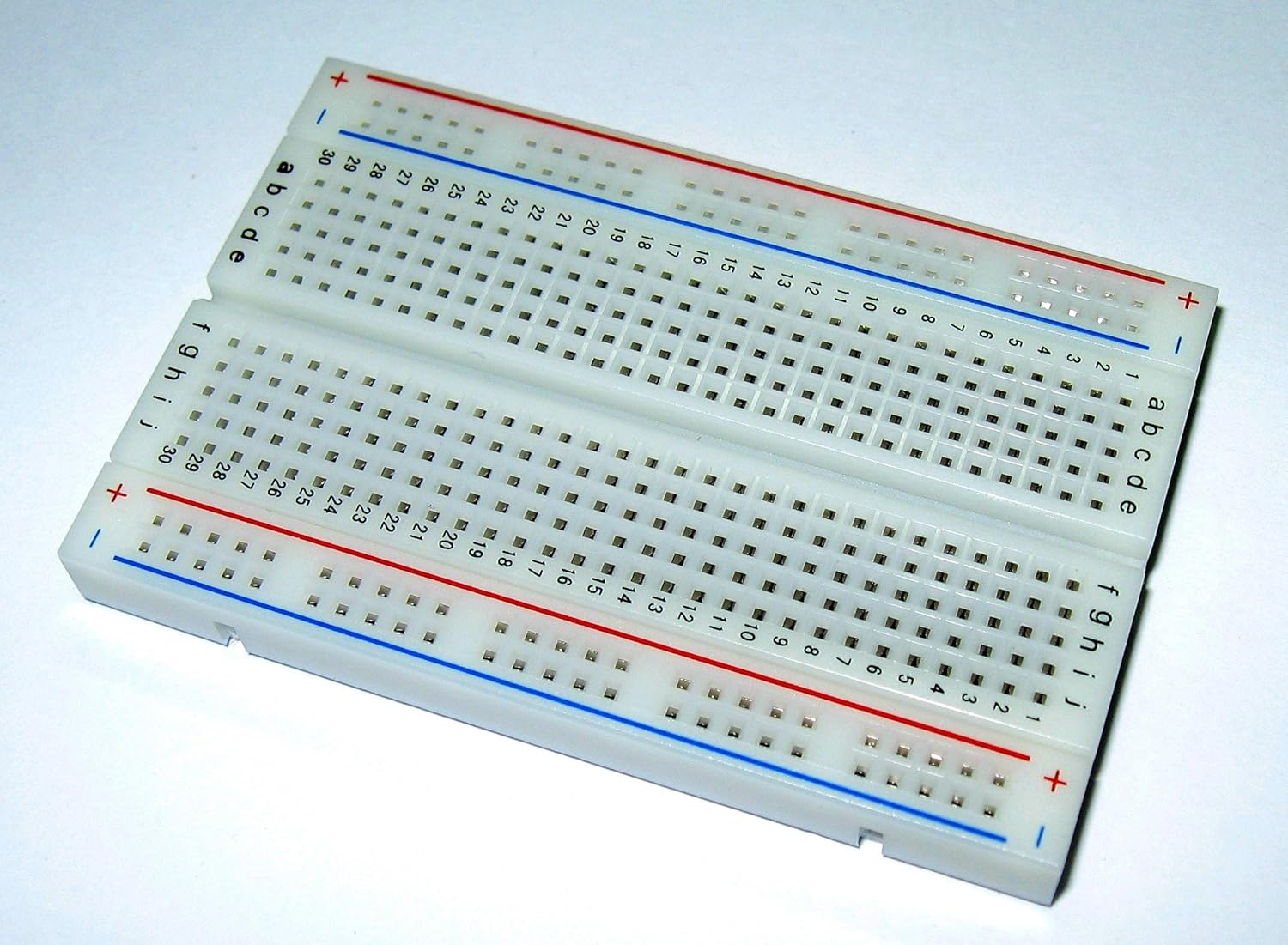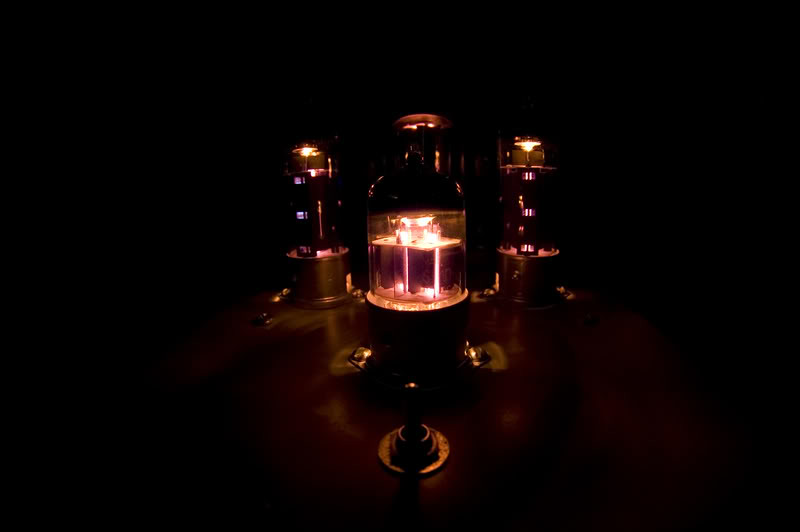You are using an out of date browser. It may not display this or other websites correctly.
You should upgrade or use an alternative browser.
You should upgrade or use an alternative browser.
Is there such a thing as an adjustable crossover?
toxcrusadr
Omelette au Fromage
I would suggest, if you want to build speakers, do some reading on the many DIY speaker projects on the web. You may already know this but speaker design is a major can of worms to get right. Nothing wrong with experimenting, but even with a highly flexible electronic crossover, there is still a plethora of other factors like cabinet design, driver layout, driver dispersion, relative driver efficiency, all kinds of stuff. You might consider picking out a project with multiple drivers that appeals to you and build it with one of the active crossovers listed here instead of a passive crossover, and multi-amp it. Then you can futz with the sound but you've started with a well designed speaker from the beginning so it can only get better. If you like the idea of lots of drivers, a line array might appeal.
toxcrusadr
Omelette au Fromage
Back on topic, I wanted to say that these active crossovers can be used by pro designers to 'dial in' the crossover parameters for a speaker, and then a passive crossover can be constructed with the same parameters, for production purposes. DIY speakers, especially in the days before these gadgets were so plentiful and cheap, had to be tweaked by trial and error. You could use a breadboard to have the crossover outside the speaker and swap out components too - something like this:

The active crossover is a quantum leap forward from this.

The active crossover is a quantum leap forward from this.
I am a big supporter of active crossovers. However, it opens up pandora’s box for really messing up the potential of a really good system if you don’t know what you are doing. There is something to be said about a well designed set of speakers with a well executed passive crossover that only takes a stereo amplifier to drive. However, the extreme performance potential of a set of drivers and how they perform in a given cabinet (or open baffle system), with a given amplifier, in a given room, typically will require an active crossover and dedicated amplifier for each frequency range/driver. Also realise this can easily double the price of an audio system so buyer beware.
The miniDSP 2x8 sure seems like the ideal tool to feed your ACD (Audio Compulsive Disorder).
The miniDSP 2x8 sure seems like the ideal tool to feed your ACD (Audio Compulsive Disorder).
Last edited:
noisefreq
Super Member
You can use an active crossover to dial in a room much like a parametric eq, just more band specific.
Are the mids hitting too high? Are the subs opening up past the sweet spot?
All adjustable.
But everyone is right. It makes it exponentially more complicated when you try to improve on the design of an existing cabinet and passive crossover.
The first thing I thought about was what Tox said, "if you like the idea of lots of drivers, a line array might appeal."
Are the mids hitting too high? Are the subs opening up past the sweet spot?
All adjustable.
But everyone is right. It makes it exponentially more complicated when you try to improve on the design of an existing cabinet and passive crossover.
The first thing I thought about was what Tox said, "if you like the idea of lots of drivers, a line array might appeal."
Tuning a crossover is a black art. I usually buy the values of caps and inductors close to what the theoretical crossover frequency should be, and I usually end up changing it slightly. Midrange and tweeter overlapping too much, maybe a bigger coil on the mid, or a smaller cap on the tweet. Lower mids off the woofer sound muddy, bigger coil on the woofer, and maybe a bigger cap on the mid. You could build a crossover that uses tapped inductors, and selectable caps, wouldn't be too hard.
toxcrusadr
Omelette au Fromage
Can you buy tapped inductors somewhere? I've never seen them. DIY would be cool but you'd need miles of coated wire and a lot of patience winding them.
Can you buy tapped inductors somewhere? I've never seen them. DIY would be cool but you'd need miles of coated wire and a lot of patience winding them.
As far as I know it would be DIY. It would probably be easier to unwind an off the shelf inductor, and add taps to it.
So when matching up amps, I have a set of Klipsch rated at 120 watts with bi-amp jacks. Would I use seperate 120 watt amps for the woofer and the horns or should the horns be powered by something less powerful? As a general rule, is the applied wattage always the same for the tweets mids and woofs?
toxcrusadr
Omelette au Fromage
Roughly half the power is in the bass in most music, so the amp for the top end can be lower power than the woofer amp. Gives some flexibility to (for example) get a nice detailed but lower power amp for the top end and a more brutish one for the woofers.
That would depend on the wattage rating of each individual component (transducer).
Generally horns and tweeters need much less power to project the highs than it does for a sub woofer to move low frequency sound waves.
So I need to spec out the components before I select an amp it sounds like.
mhardy6647
Lunatic Member
The way I look at it, the best idea is horses for courses. Case in point -- Steve Deckert made/makes a dimunitive little single-ended (pseudo) triode amplfier, the SE-84 "Zen" amp. It's a nice little amplifier but very low powered (less than 2 watts per channel); barely capable of good wide-range performance at reasonable volume levels with high sensitivity loudspeakers (I used one with a pair of Klipsch Cornwalls for a while) -- but the SE-84 amp would make an excellent midrange or midrange and treble amplifier using an active crossover and a stouter amplifier (e.g., one of Nelson Pass's amps) for bass.
 SE84B in the dark by icouldbeahero, on Flickr
SE84B in the dark by icouldbeahero, on Flickr
 SE84B in the dark by icouldbeahero, on Flickr
SE84B in the dark by icouldbeahero, on Flickrtoxcrusadr
Omelette au Fromage
 Would totally listen to that.
Would totally listen to that.I made my own passive, 1st order, 3-way crossovers that are adjustable using "tapped inductors" of my own making. I just bought 3 (per crossover) 2mH, 16 gauge chokes (Rockford) aligned them on a spindle and glued them together. The net result is greater than the sum of the parts.
Using the three chokes (in series) produces 8 mH, 2 chokes make about 4.8 mH and 1 choke makes 2 mH. Resistors are then used to dial in choke settings between these. Note rotary switch marked "Contour."
BTW, the crossover in the ESS CE-2 uses two inductors for the woofer with a variable resistor that lets you dial in the second inductor to taste. That is then an "adjustable" crossover in a factory offering.

Using the three chokes (in series) produces 8 mH, 2 chokes make about 4.8 mH and 1 choke makes 2 mH. Resistors are then used to dial in choke settings between these. Note rotary switch marked "Contour."
BTW, the crossover in the ESS CE-2 uses two inductors for the woofer with a variable resistor that lets you dial in the second inductor to taste. That is then an "adjustable" crossover in a factory offering.
I actively Tri-amp a pair of modified Magnapan MGIIIa, and drive the bass panels with SS - Acurus A200 and the mids and ribbon tweeter with tubes - Quicksilver mono blocks. I was fortunate to find a modified Behringer DCX 2496 with analog outputs and PS upgrades which halted my crossover upgrade search. Not many units offer the selection of both type and amount of slope as well as many other options as the DCX2496.
I also run a pair of NHT W2 Subs driven by another Acurus A200 thru a NHT X1 crossover, so I guess I am really running a quad amped system. :^)
Do not forget to consider the ohm rating of the individual units in the system. I run the ribbon tweeters in the MGIIIa's with Quicksilver Mini Monos because they offer a two ohm tap which is rare in tube amps.
Regards,
Jim
I also run a pair of NHT W2 Subs driven by another Acurus A200 thru a NHT X1 crossover, so I guess I am really running a quad amped system. :^)
Do not forget to consider the ohm rating of the individual units in the system. I run the ribbon tweeters in the MGIIIa's with Quicksilver Mini Monos because they offer a two ohm tap which is rare in tube amps.
Regards,
Jim
Similar threads
- Replies
- 7
- Views
- 816
- Replies
- 15
- Views
- 949
- Replies
- 11
- Views
- 4K
- Replies
- 16
- Views
- 3K



